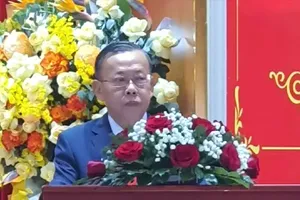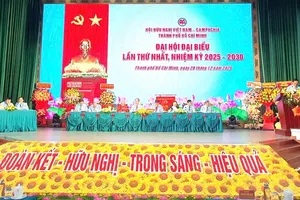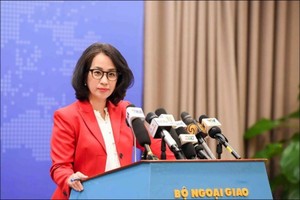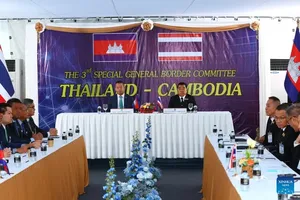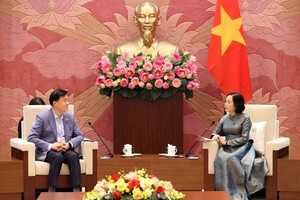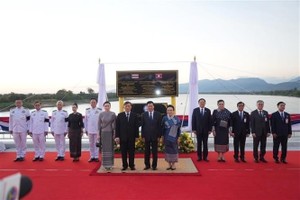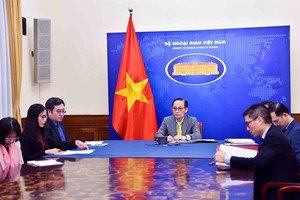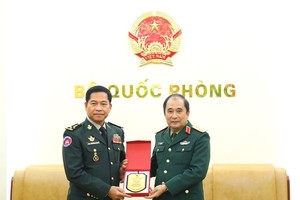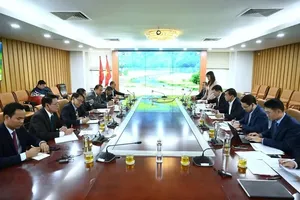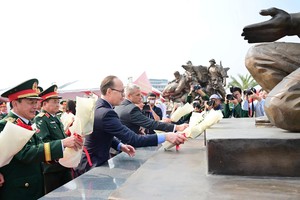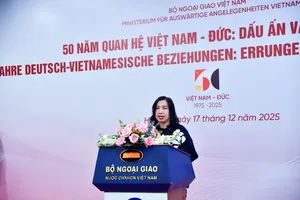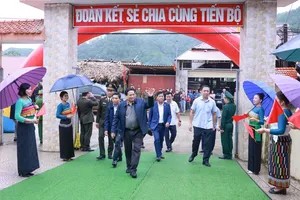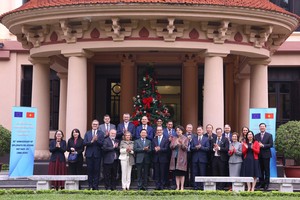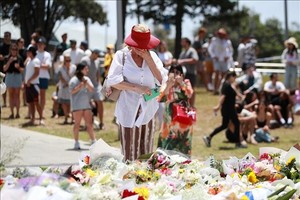The victory, whose name derives from the victory of the Dien Bien Phu Campaign in 1954 that put an end to the French colonial rule over Indochina, was an epic of the Vietnamese people in the 20th century. It was one of the most glorious feats of arms in the country’s history of fighting foreign invaders, and forever a symbol of the Vietnamese people’s mettle and wisdom in the Ho Chi Minh era.
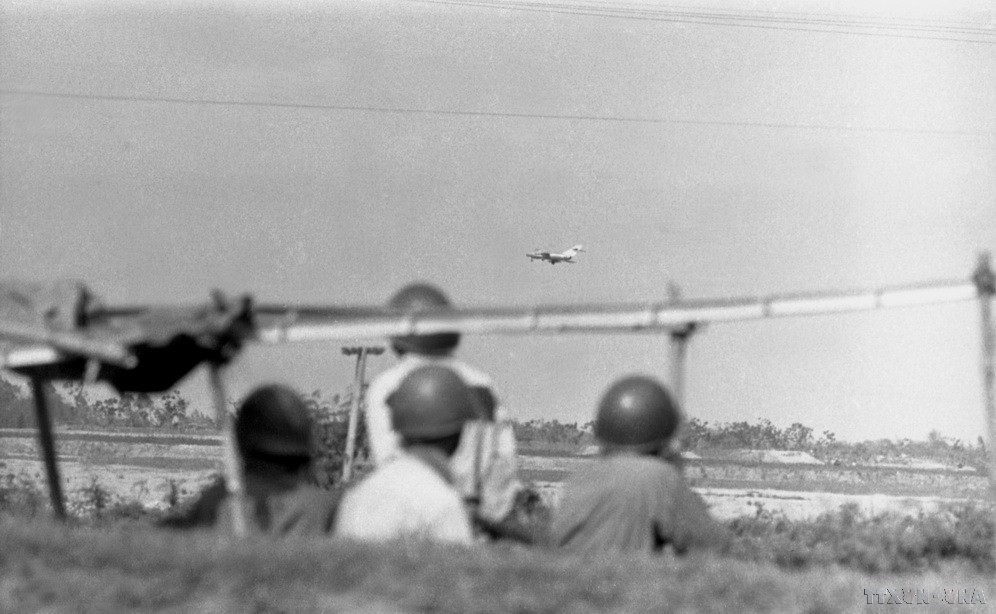 |
Anti-aircraft and air defence soldiers safeguard the skies of Hanoi. (Photo: VNA) |
In early 1972, the resistance war against the US entered its fiercest stage. Vietnam secured great wins across the three fronts of military, politics, and diplomacy. Meanwhile, the US “Vietnamisation” strategy faced the risk of complete failure.
To save its “Vietnamisation” strategy, the US imperialists plotted to wage a strategic airstrike using B52 bombers to force Vietnam to sign the Paris Peace Accords with articles revised as they wanted, destroy the North’s economic and defence resources, hamper the delivery of support for the revolution in the South, sway the Vietnamese people’s determination to fight against the US, and threaten the struggling movement by people around the world.
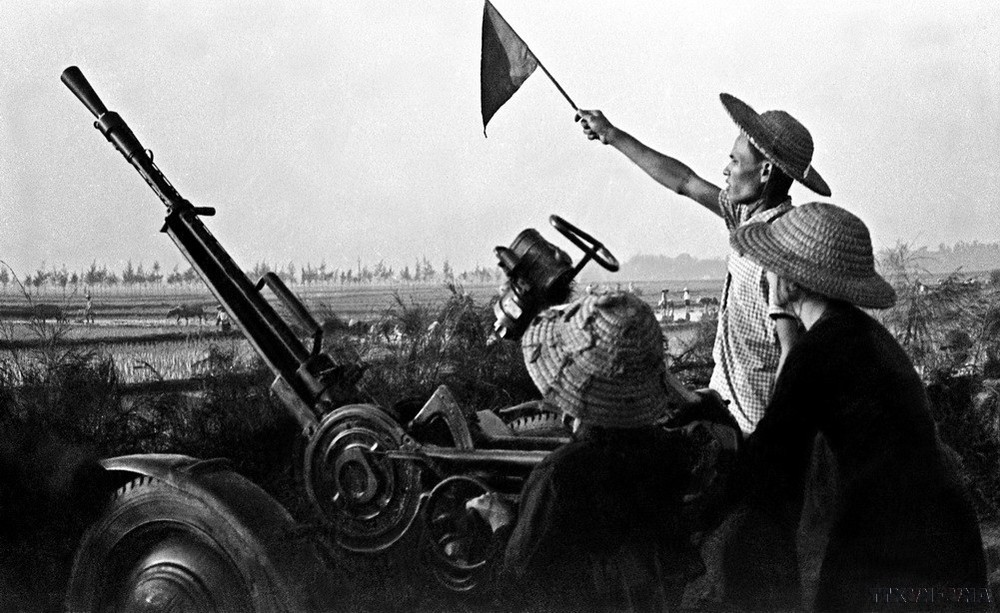 |
Militia of Tu Liem district, Hanoi, stay vigilant and opportunely open fire, helping shoot down many US aircraft. (Photo: VNA) |
On December 14, 1972, US President Richard Nixon officially approved a strategic aerial bombing operation called “Linebacker II” in Hanoi and Hai Phong. With this plan, the US imperialists mobilised the greatest force since World War II: 193 of the 400 B-52 bombers that the US had at that time; 1,077 of the 3,043 tactical aircraft (including a squadron of about 50 F-111 fighters); six of the 24 aircraft carriers; more than 50 tanker aircraft, other types of service planes, and 60 warships of all kinds from the US Seventh Fleet in the Pacific.
Clear-headed and judicious, the Party Central Committee and President Ho Chi Minh made the right assessment and an early and precise forecast of the US imperialists’ plot to escalate in the North, along with ruses to prolong the war.
From 1965, when the US deployed the B-52s to the Vietnamese battlefield and continually committed crimes against the Vietnamese people, President Ho Chi Minh assigned the Air Defence – Air Force Service to devise measures to cope with the B-52s.
“Sooner or later, the US imperialists will deploy the B-52s to attack Hanoi, and in Vietnam, the US will definitely lose, but it will lose only after losing in the skies of Hanoi,” he said.
As the leader predicted, from December 18 to 29, 1972, the US waged the “Linebacker II” operation, in which its aircraft made 4,583 sorties, including 663 sorties by the B-52s, dropping tens of thousands of tonnes of munition on the North of Vietnam. In particular, its air force bombarded Hanoi alone with over 10,000 tonnes of munition.
Confident of winning, Hanoi, Hai Phong, and other localities became “special” battlefields. In this battle, with a brave, unyielding, smart, and creative fighting spirit, the radar troops overcame jamming to search for enemy aircraft while air defence – air force aircraft turned into “Rong lua” (Fire dragon) and “En bac” (Silver swallow) to defeat the enemy’s strategic raids, making a decisive contribution to the miraculous victory.
During 12 days and nights resisting the US Air Force, the troops and people of the North shot down 81 aircraft, including 34 B-52s, and caught or killed hundreds of US pilots. That forced the US administration to deescalate, stop bombardments on areas to the north of the 20th parallel, invite Vietnam to return to the negotiations in Paris, and prepare for the signing of the agreement on ending the war and restoring peace in Vietnam.
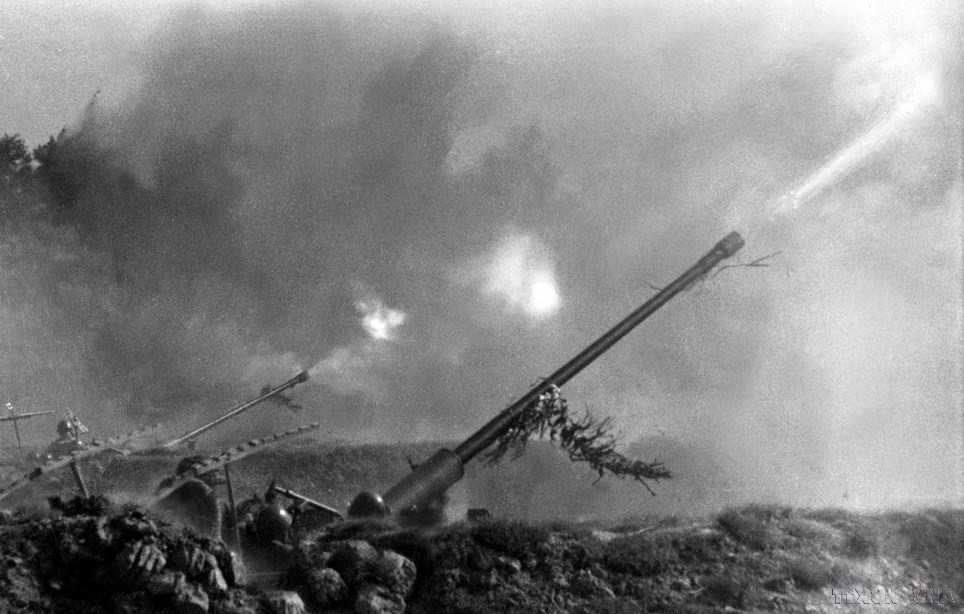 |
Soldiers of Company 3 of anti-aircraft artillery corps X stay wise and brave, open fire in a timely and precise manner to shoot down many US aircraft. (Photo: VNA) |
The resounding victory by Vietnam and the huge losses suffered by the US imperialists in the 12-day-and-night air battle were described by the world as the “Dien Bien Phu in the Air” victory. This triumph marked a brilliant milestone for the Vietnamese army and people’s revolutionary heroism, defeating the US’s biggest airstrike and forcing the imperialists to sign the Paris Peace Accords on January 27, 1973 to end the war in Vietnam.
The victory was one of the most glorious in the 20th century. It went down in the history of Vietnam and became a symbol of the country’s will, wisdom, and mettle in the Ho Chi Minh era.
Fifty years have passed since the win, but its everlasting value and spirit remain intact in the country’s history and the eyes of progressive people around the world.
